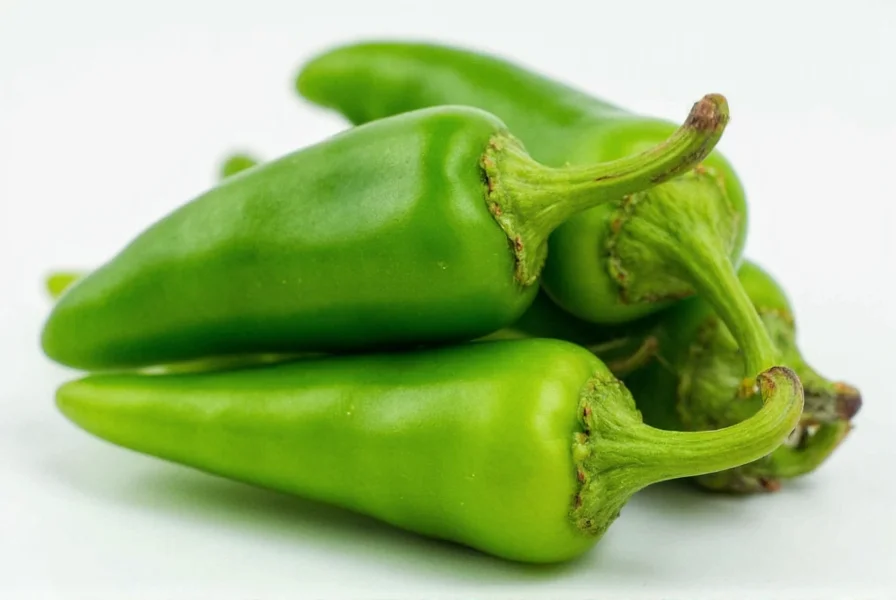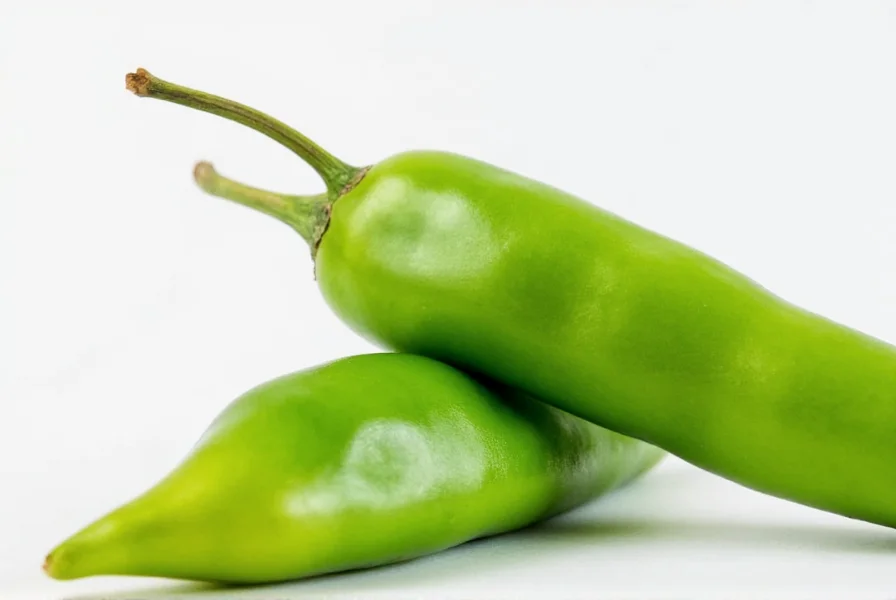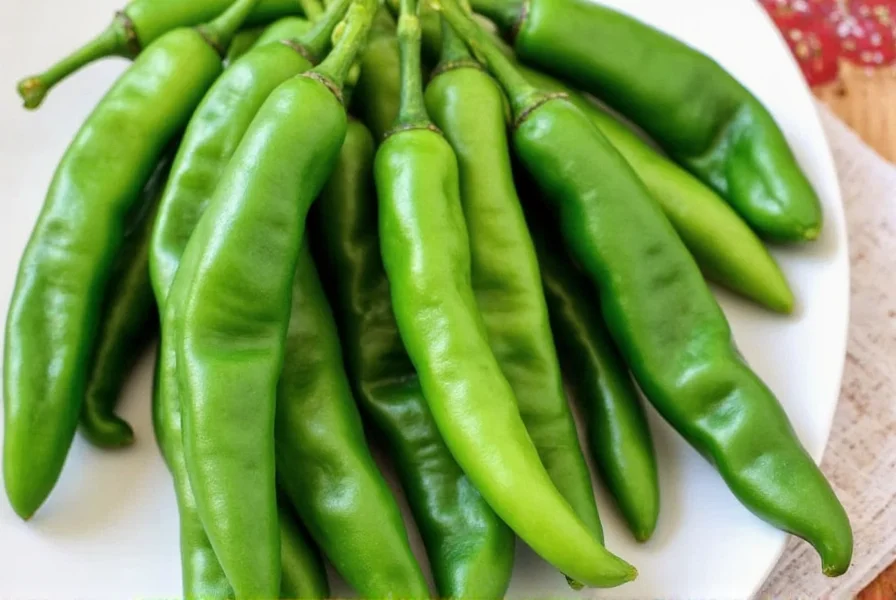While most consumers know cayenne pepper as the vibrant red spice in their pantry, the green version represents an earlier stage in the pepper's natural lifecycle. Understanding this distinction provides valuable insight for culinary applications and nutritional considerations.
The Lifecycle of Cayenne Peppers
Cayenne peppers follow a predictable maturation process. All cayenne varieties begin as green peppers on the plant. As they receive sunlight and time, they progress through color stages: green → yellow → orange → red. The green stage typically occurs 45-60 days after flowering, while full red ripeness happens around 80-100 days.
This maturation affects not just color but chemical composition. As peppers ripen, capsaicin (the compound responsible for heat) concentration increases, while chlorophyll breaks down and carotenoids develop. This explains why green cayenne peppers generally register slightly lower on the Scoville scale than their fully mature red versions.
| Characteristic | Green Cayenne Pepper | Red Cayenne Pepper |
|---|---|---|
| Harvest Time | 45-60 days after flowering | 80-100 days after flowering |
| Heat Level (Scoville) | 30,000-40,000 units | 30,000-50,000+ units |
| Flavor Profile | Grassy, vegetal, bright | Smoky, sweet, complex |
| Common Forms | Fresh only | Fresh, dried, powdered |
| Vitamin C Content | Higher (less degradation) | Slightly lower |
Flavor Profile and Culinary Applications
Green cayenne peppers offer a distinct culinary experience compared to their red counterparts. Their flavor profile features:
- Grassy, vegetal notes reminiscent of fresh bell peppers
- Bright acidity with citrus undertones
- Moderate heat that builds gradually (less intense than red cayenne)
- Subtle herbal qualities similar to green chilies
Chefs specializing in fresh pepper applications note that green cayenne works particularly well in dishes where you want heat without overwhelming smokiness. Consider these culinary uses for green cayenne peppers:
- Raw applications: Thinly sliced in salads, salsas, or ceviche
- Quick-cooked dishes: Stir-fries, fajitas, or scrambled eggs
- Infused vinegars and oils for subtle heat
- Fresh hot sauces where bright flavor is desired
- Garnishes for seafood dishes requiring mild heat
When substituting green cayenne for red in recipes, remember that the flavor profile differs significantly. Green cayenne won't provide the same depth in slow-cooked dishes where red cayenne's developed sugars and smokiness shine.
Nutritional Comparison
Both green and red cayenne peppers offer impressive nutritional benefits, but with some noteworthy differences. Green cayenne peppers typically contain higher levels of certain nutrients due to less exposure to sunlight and shorter time on the plant.
Vitamin C content remains more stable in green cayenne peppers, as prolonged sun exposure during ripening can degrade some vitamin content. Green cayenne also contains different phytochemical profiles, with higher concentrations of certain chlorophyll-related compounds.
For those interested in the health benefits of capsaicin, red cayenne generally provides more concentrated amounts due to higher capsaicin levels in mature peppers. However, green cayenne still offers substantial amounts while providing additional fresh pepper benefits.

Selecting and Storing Green Cayenne Peppers
When shopping for green cayenne peppers, look for these quality indicators:
- Firm, crisp texture with taut skin
- Vibrant, uniform green color (avoid yellowing)
- Smooth skin without wrinkles or soft spots
- Peppers that feel heavy for their size
Proper storage extends freshness significantly. Keep green cayenne peppers in the vegetable crisper drawer of your refrigerator for up to two weeks. For longer storage, consider these options:
- Freezing: Slice peppers and freeze on a baking sheet before transferring to freezer bags
- Pickling: Preserves flavor while adding culinary versatility
- Infusing: Create flavored vinegars or oils
Unlike red cayenne peppers, green varieties don't dry well for powder creation, as they lack the developed capsaicin concentration and change color unappealingly during the drying process.
Growing Green Cayenne Peppers
Gardeners can easily grow green cayenne peppers by harvesting them early in their maturation cycle. The plants require:
- Full sun exposure (6-8 hours daily)
- Well-draining soil with pH 6.0-6.8
- Consistent moisture (but not waterlogged soil)
- Warm temperatures (70-85°F ideal)
The key to harvesting green cayenne peppers is timing. Pick them when they reach 4-6 inches in length but before any color change begins. This typically occurs about 45-60 days after transplanting seedlings outdoors. Regular harvesting encourages continued production throughout the growing season.

Common Misconceptions
Several misconceptions surround green cayenne peppers:
- Misconception: Green cayenne is a different variety than red cayenne
Reality: It's the same plant harvested at different maturity stages - Misconception: Green cayenne is always milder than red
Reality: Heat varies by individual pepper and growing conditions; some green cayenne can be hotter than certain red specimens - Misconception: Green cayenne can be dried to make traditional cayenne powder
Reality: Drying green cayenne results in poor color and inconsistent heat; red peppers are preferred for powder production
Practical Applications in Modern Cuisine
Chefs increasingly recognize the unique value of green cayenne peppers in contemporary cooking. Their bright flavor profile complements modern culinary trends emphasizing fresh, vibrant ingredients. Consider these innovative applications:
- Green cayenne pesto as a spicy alternative to traditional basil pesto
- Infused simple syrups for craft cocktails with subtle heat
- Blended into fresh guacamole for added dimension
- Thinly sliced as a garnish for avocado toast
- Added to fresh fruit salads for unexpected heat contrast
When working with green cayenne peppers, remember that heat concentration varies along the pepper. The placenta (white ribs inside) contains the highest concentration of capsaicin, so removing these reduces heat significantly while preserving flavor.
Conclusion
Green cayenne pepper represents an often-overlooked stage in the cayenne pepper lifecycle that offers unique culinary possibilities. Understanding the difference between green and red cayenne pepper helps home cooks and professional chefs alike make informed decisions about when to use each variety. While red cayenne delivers the familiar intense heat and smokiness perfect for many applications, green cayenne provides a brighter, more vegetal alternative ideal for dishes where fresh pepper flavor should shine through without overwhelming heat. By recognizing these distinctions, you can elevate your cooking with more nuanced heat application and flavor profiles.
Frequently Asked Questions
Can green cayenne peppers turn red after being picked?
Unlike some pepper varieties, green cayenne peppers generally won't continue ripening to red after harvest. They may develop some yellow or orange hues if left at room temperature, but they won't achieve the deep red color or full flavor development of vine-ripened peppers. For best results, harvest cayenne peppers at your preferred maturity stage directly from the plant.
How does the heat level compare between green and red cayenne peppers?
Green cayenne peppers typically register slightly lower on the Scoville scale (30,000-40,000 units) compared to red cayenne (30,000-50,000+ units) because capsaicin concentration increases as peppers mature. However, heat can vary significantly based on growing conditions, with some green cayenne specimens occasionally hotter than certain red ones. The heat from green cayenne also tends to be brighter and more immediate, while red cayenne heat builds more gradually.
Can I substitute green cayenne for red cayenne in recipes?
You can substitute green cayenne for red in many recipes, but be aware of flavor differences. Green cayenne provides a grassier, brighter heat that works well in fresh applications, while red cayenne offers deeper, smokier notes better suited for cooked dishes. For dried spice recipes, use approximately 25% more green cayenne to achieve similar heat levels, but recognize that the flavor profile will differ. In slow-cooked dishes, red cayenne generally performs better due to its developed flavor compounds.
Why don't grocery stores commonly sell green cayenne peppers?
Most commercial cayenne production focuses on red peppers for drying and powder production, which has higher market demand. Green cayenne has a shorter shelf life and is less visually distinctive from other green chili varieties, making it less commercially viable for large-scale distribution. You're more likely to find green cayenne peppers at farmers' markets, specialty grocers, or by growing them yourself, as they're primarily harvested before full maturity for specific culinary applications rather than mass commercial production.
Are there nutritional differences between green and red cayenne peppers?
Yes, green cayenne peppers typically contain higher levels of vitamin C and certain chlorophyll-related compounds due to less sun exposure during growth. Red cayenne peppers develop higher concentrations of carotenoids (including beta-carotene) and slightly more capsaicin as they mature. Both varieties offer significant nutritional benefits, but green cayenne provides more of certain fresh-pepper nutrients while red cayenne delivers more concentrated capsaicin and developed phytochemicals. The differences, while measurable, are generally modest in typical culinary usage amounts.











 浙公网安备
33010002000092号
浙公网安备
33010002000092号 浙B2-20120091-4
浙B2-20120091-4